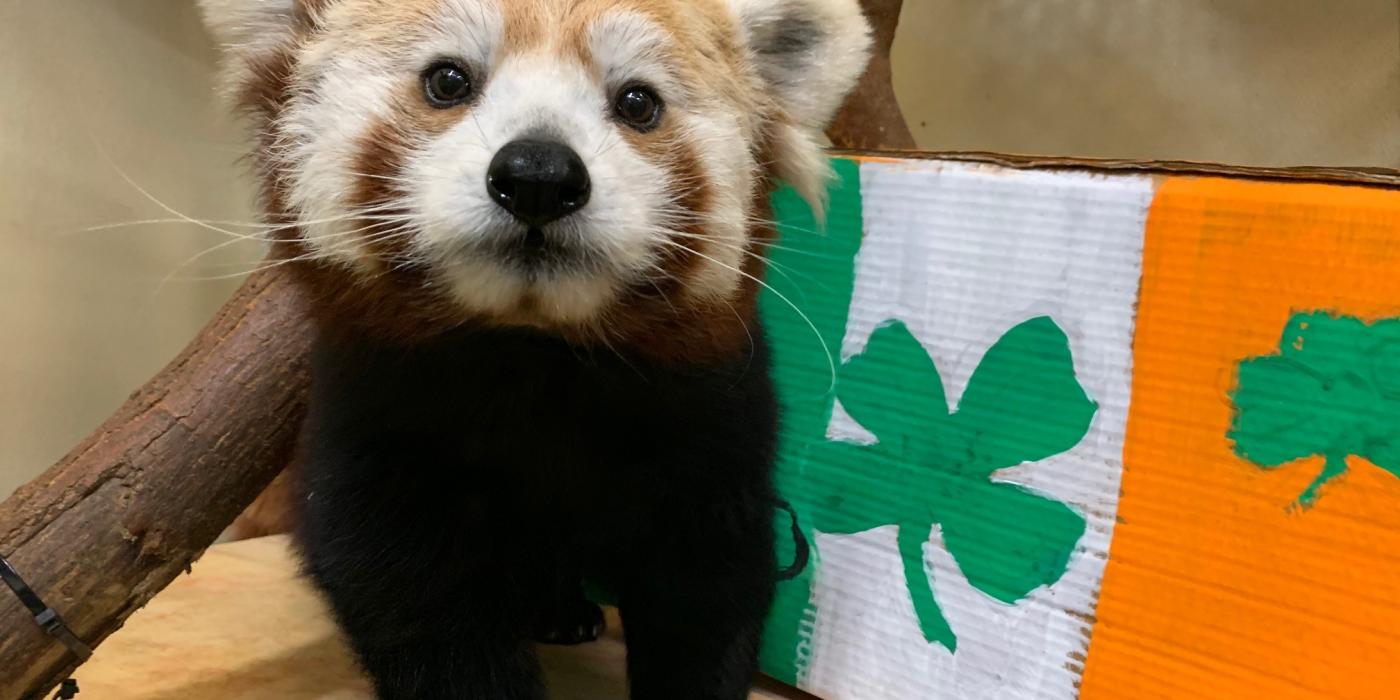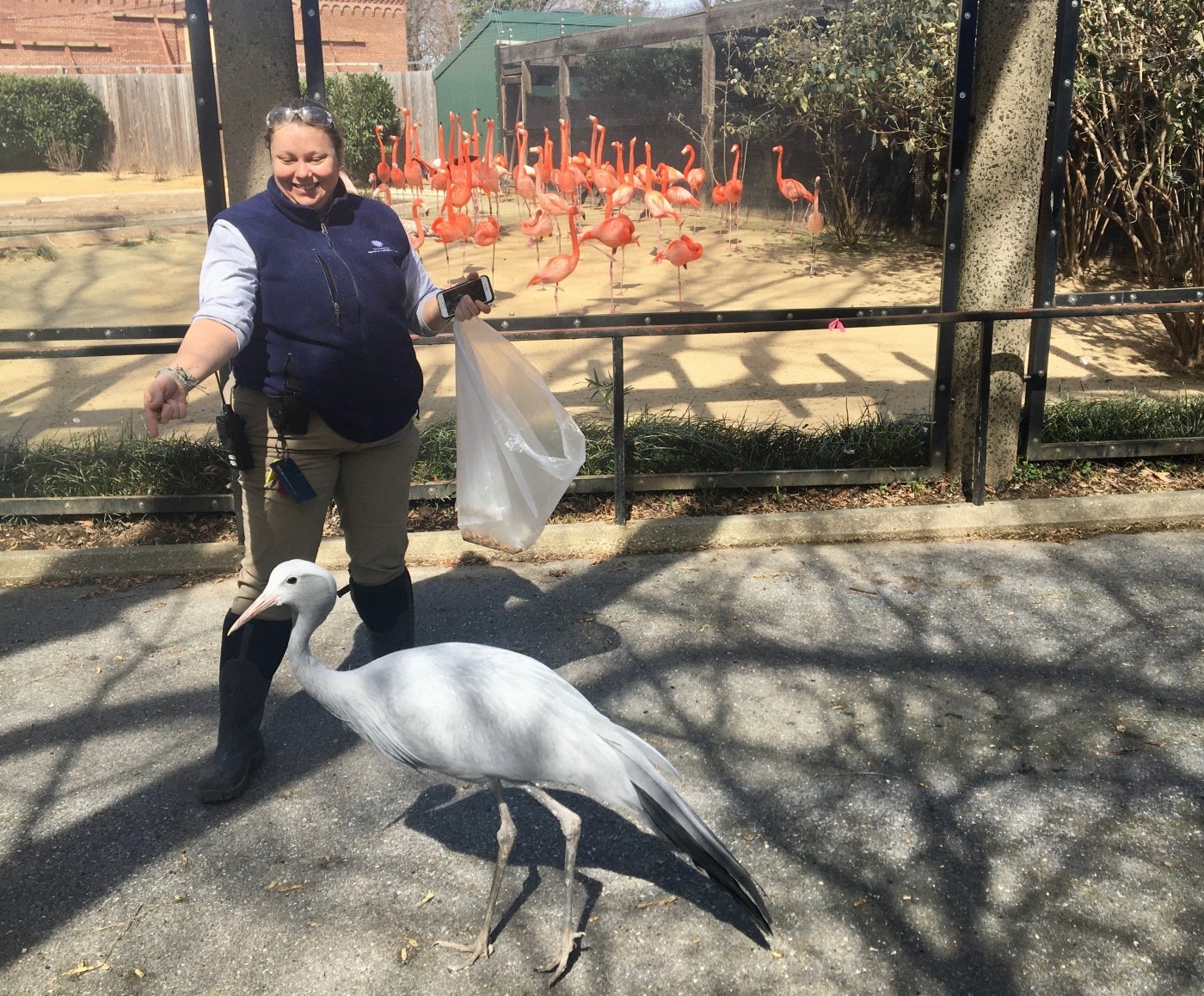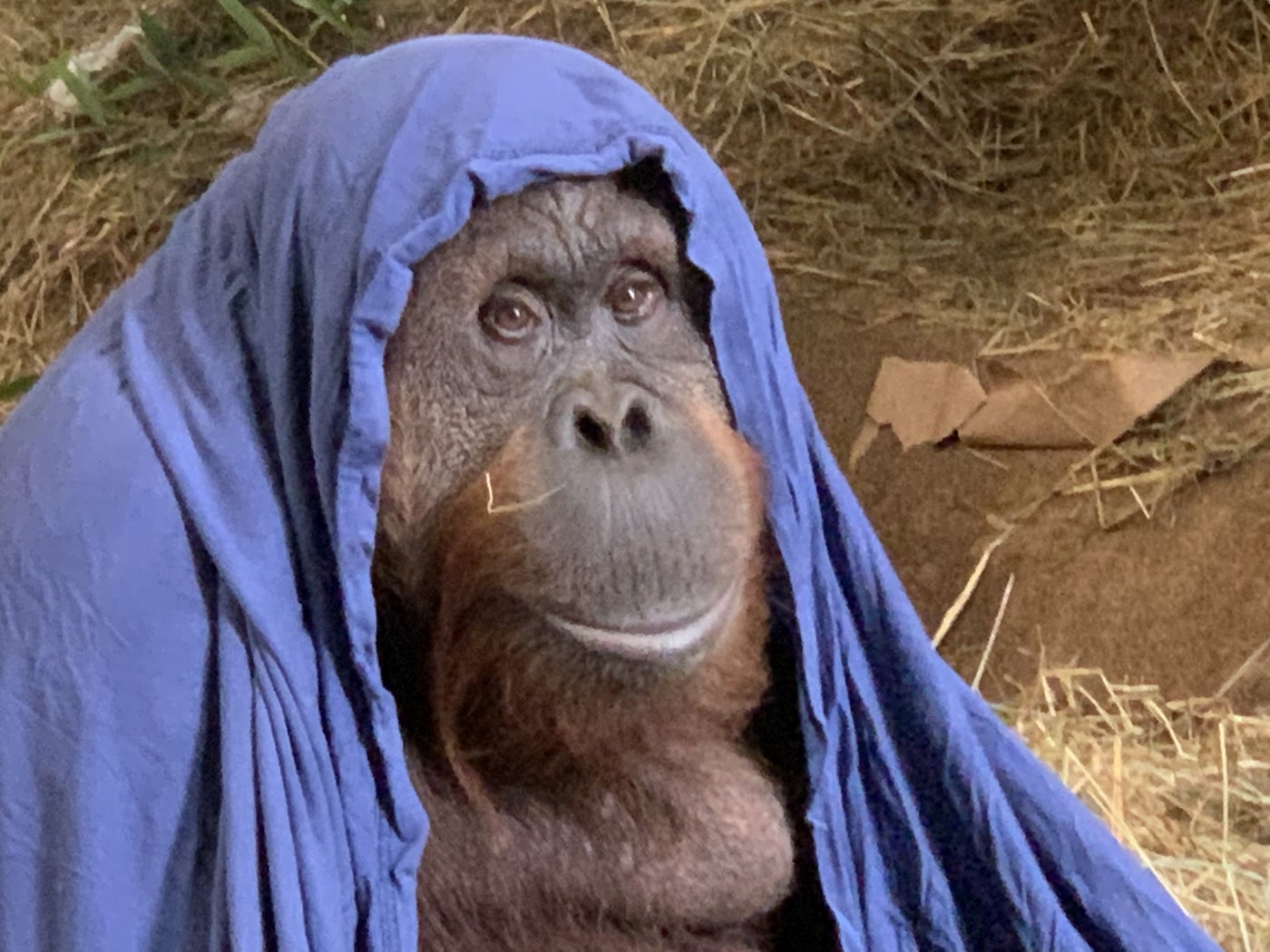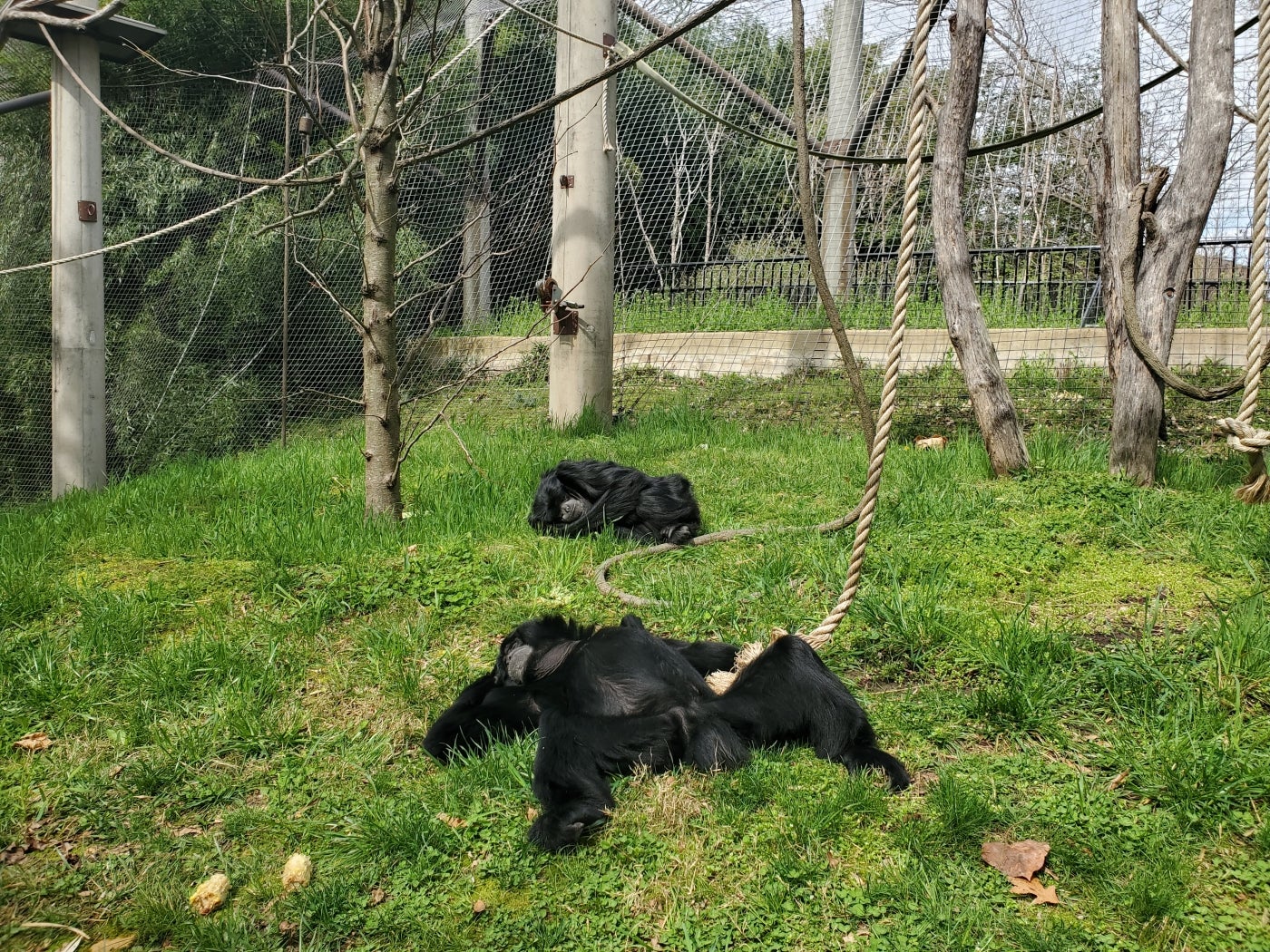Bringing the Zoo to You: March 2020 Edition

From flamingo courtships to weekly weigh-ins for the African lions, the Smithsonian’s National Zoo is buzzing with beastly activity behind the scenes! Though the Zoo is temporarily closed to visitors, our dedicated animal care team continues to provide the highest quality of animal care to all its residents. Get a sneak peek at the animals’ activities from March 14 through April 1.
Thank you for your continued support. Follow the Zoo's social media using the hashtag #NatZooZen for more fun updates!
Flamingo Flock | Bird House
The Zoo may be closed to the public, but life…uhh…finds a way. At the Bird House, our American flamingo flock has begun their courting behaviors. In preparation for breeding, the birds engage in some head flagging and synchronized walking. Keepers observe these behaviors every year to identify breeding pairs. Flamingos mate for life and will only search for a new mate if theirs passes away.
Orangutans | Primates
We can always count on 3.5-year-old Bornean orangutan, Redd, to make us smile. As he crosses the O-Line with mom Batang following closely behind, he reminds us to keep calm, carry on and just keep swinging.
Bennett's Wallaby | Small Mammal House
Spring has sprung at the Small Mammal House, and so has its newest resident—a Bennett’s wallaby joey! Keepers believe mom Victoria gave birth to a jellybean-sized joey Aug. 10, 2019. It first peeked out of the pouch Jan. 27, and took its first hops March 18 under mom’s close watch. Victoria keeps the joey close, so it may be some time before keepers determine his or her sex. They describe the joey as a ‘homebody’ who spends most of its time hanging out in mom’s pouch!
Two-Toed Sloth | Small Mammal House
Hang in there. Slow down for a moment of #NatZooZen with two-toed sloth Athena and her kale. Two-toed sloths are native to Central and South America and live in the canopies of tropical rainforests. They are very slow moving and have a metabolic rate of about 40% to 45% of what would be expected for their body weight. Their body temperatures range between 86 to 93 degrees Fahrenheit, which helps them conserve energy.
African Lion | Great Cats
Get a peek behind the scenes of our Great Cats habitat from animal keeper Rebecca Stites! “Every Thursday, the lions take turns standing on the scale while I read their weights. It's a super easy way to earn a special tasty treat--meatballs! Six year old Amahle almost always insists on going first. Her mother, Shera, usually follows. Aunt Naba goes last and tends to linger in the hopes of receiving a little something extra. Sometimes it works! In this video, they weighed 332 lbs., 335 lbs., and 335 lbs., respectively.
“Amahle's brothers, Jumbe and Shaka, were also weighed. Jumbe was a steady 470 lbs., while Shaka tipped the scale at 500 lbs.! Both boys are lean muscle machines and weigh quite a bit more than their father, Luke. While not cooperative today (laying down behind the scale doesn't exactly count as participation), Luke usually weighs around 390 lbs.
“A healthy body condition is important for maintaining the overall health of our animals. Acquiring weekly weights allows the lion animal care team (which includes keepers, curators, veterinarians, and nutritionist) to better understand each individual’s gain and loss trend based on environmental and management factors.
“As we move into summer, the lions’ energy levels will change. (You may have noticed they do a lot of 'lion' around in warm weather.) At that time, we usually methodically decrease their daily allotment of food; otherwise, their weights would climb.
“Tracking weight change is just one tool used to determine healthy body condition. During daily training sessions, we do visual assessments to look for any cuts, bumps or scrapes that may need veterinary attention. We also look for any behaviors that are out of the ordinary, as that could indicate that a lion isn’t feeling well. Combined, these tools help us ensure our lions are maintained at their healthiest and happiest body weights!”
Two-Toed Sloth | Amazonia
Look who came down from the treetops to say hello: it’s Howie, our southern two-toed sloth! He was “supervising” assistant curator Ed Smith as he trimmed the trees in Amazonia’s rainforest habitat.

Stanley Crane | Bird House
It’s a beautiful day in the neighborhood! Stanley crane Alice is visiting some of her flamingo neighbors while on an afternoon stroll with Bird House keeper Jen Ferraro. She is carrying a bag full of Alice’s favorite snacks: crickets. These outings give Alice, who was hand-raised, a chance to socialize with keepers. It also helps build strength and endurance in her leg, which continues to heal post-surgery. Read keeper Debi Talbott’s latest update on Alice.

Orangutan | Primates
Snug as a bug. Primate keepers provide the Zoo’s orangutans with hay, sheets and other materials to build their nests. As Lucy demonstrates, these blankets can be a cozy cover anytime—not just naptime. Learn more about orangutan nesting techniques.

Red Panda | Asia Trail
A little luck o’ the Irish found its way to Asia Trail! For St. Patrick’s Day, keepers presented female red panda Asa with her own “pot of gold”—an enrichment box filled with leafeater biscuits. Red pandas have sharp claws, which they use for traction as they climb trees. Asa also puts them to use tearing open this box to retrieve the biscuits inside. Not only does she get a tasty treat, but also some physical and mental exercise! See red panda enrichment (including painting) in action.

Siamangs | Primates
Siamangs Bradley (foreground) and Ronnie (background) are soaking up some rays after a training session with primate keeper Carly Hornberger. As part of the Zoo’s enrichment and training program, keepers teach the siamangs behaviors that enable them to voluntarily participate in their own healthcare. If the apes choose to participate, they receive their favorite foods—including banana and papaya—as a reward! Training is not only good mental stimulation for the siamangs, but also gives keepers an opportunity to examine the animals up close and monitor their health on a daily basis. “They work hard, and they relax hard!” Carly says.
This story appears in the April 2020 issue of National Zoo News.
Want to help replenish toys, puzzle feeders and training tools that are a bit run-down yet well loved by the Zoo’s animals? Donate to the Enrichment Trunk. Your support directly benefits the animals at the Smithsonian’s National Zoo and Conservation Biology Institute.
Related Species:


